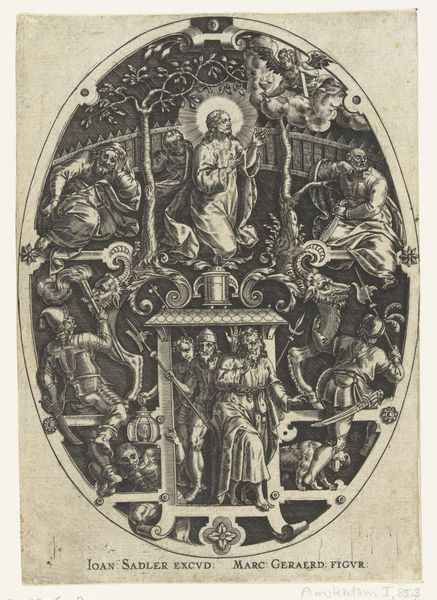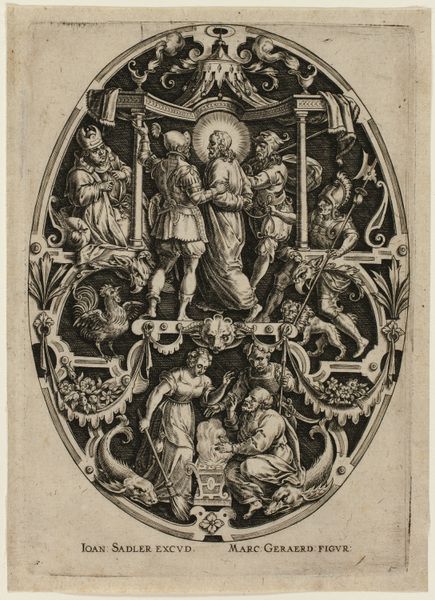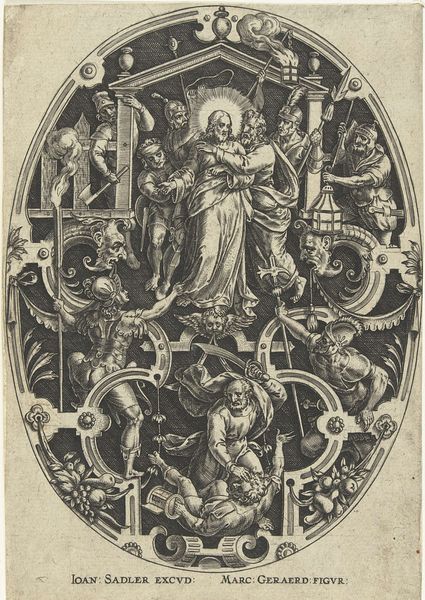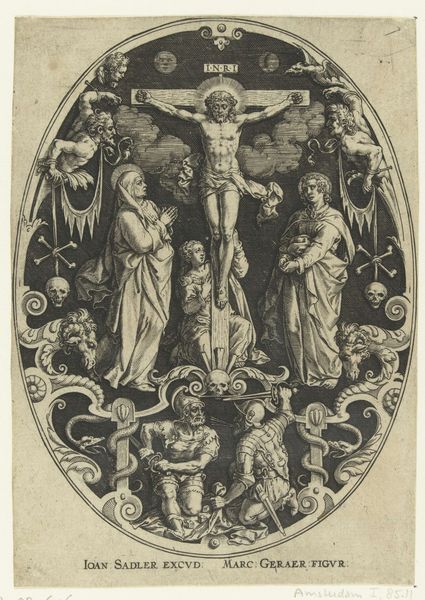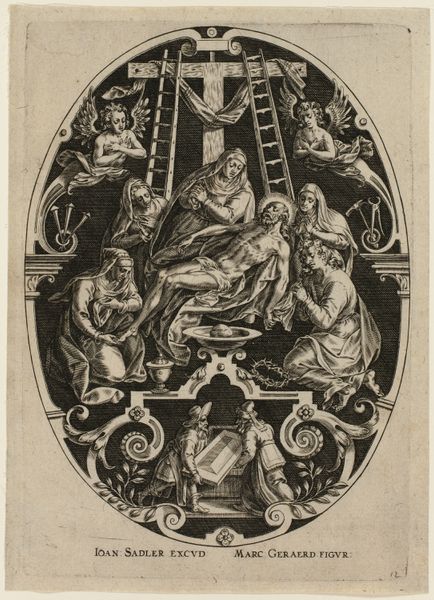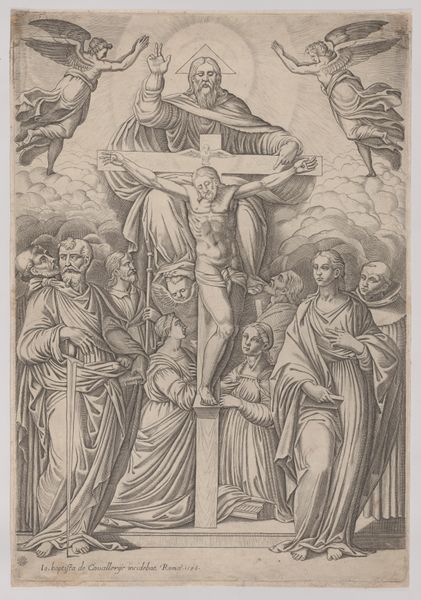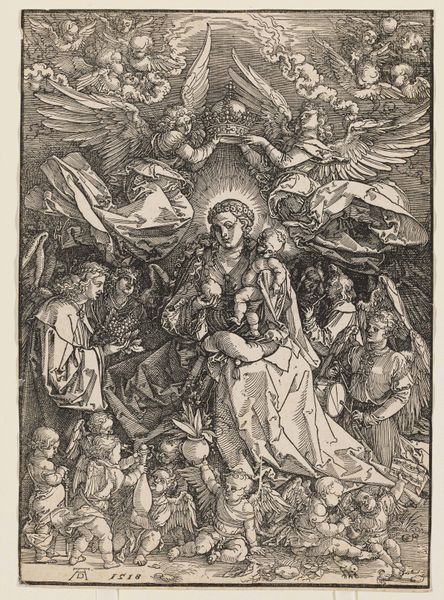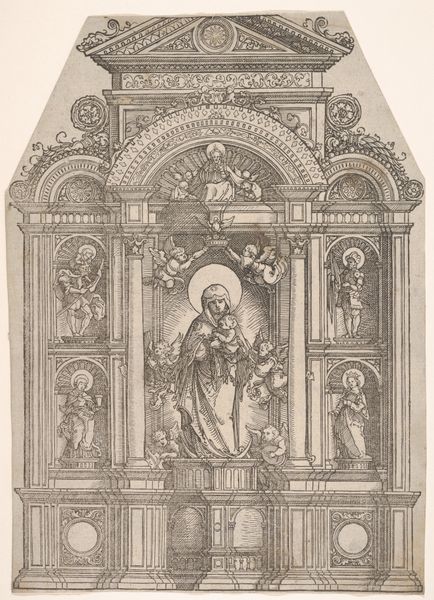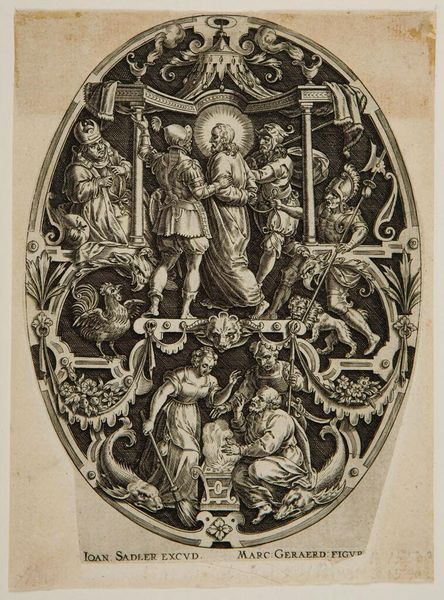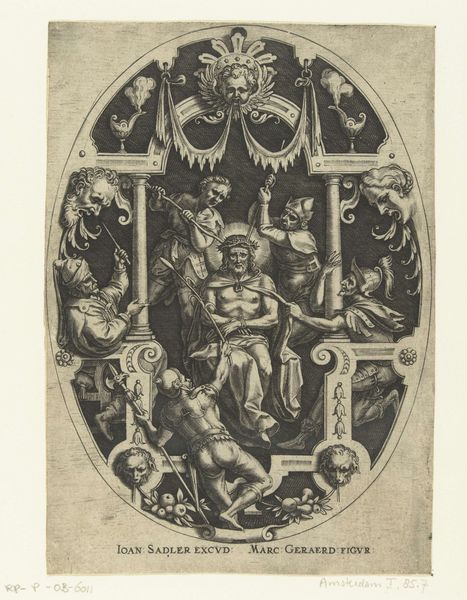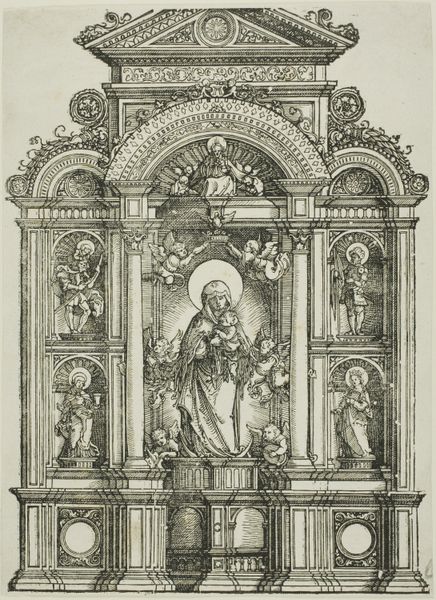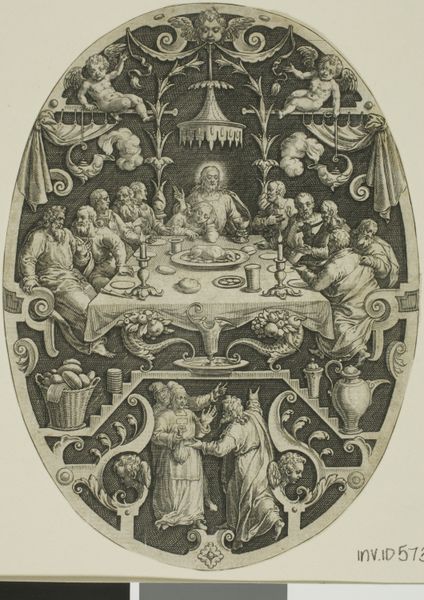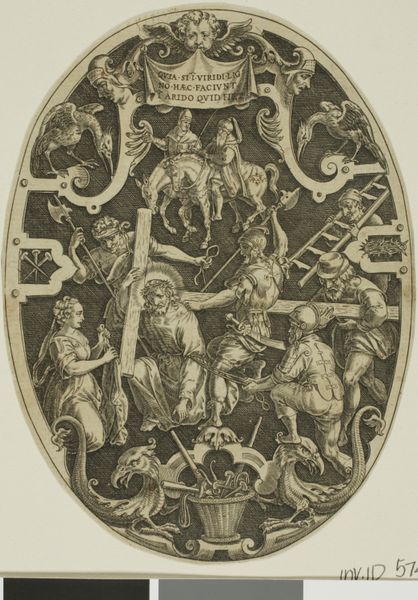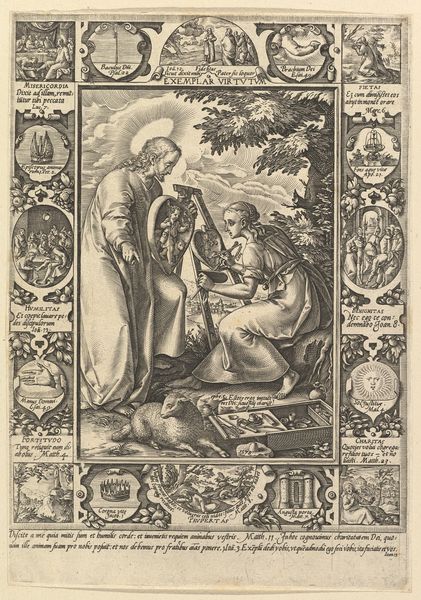
Agony in the Garden, from Passion of Christ 1575 - 1600
0:00
0:00
drawing, print, paper, engraving
#
drawing
#
narrative-art
# print
#
mannerism
#
figuration
#
paper
#
line
#
history-painting
#
italian-renaissance
#
engraving
Dimensions: 152 × 111 mm (plate, oval cropped to image)
Copyright: Public Domain
Curator: This engraving, "Agony in the Garden, from Passion of Christ", by Jan Sadeler the Elder, likely created between 1575 and 1600, immediately strikes me with its intricacy and rather melancholic air. What do you observe? Editor: The level of detail achieved through engraving is quite impressive. The varying line weights create a remarkable range of textures and values, conveying the solemnity and physical materials within this space. Curator: Absolutely, and look at how the artist depicts Christ in anguish, praying in Gethsemane while his disciples slumber nearby. This moment encapsulates profound themes of faith, sacrifice, and the weight of destiny, which speak to current challenges of social justice in these fraught times. Editor: I’m especially drawn to the contrast in the depiction of the divine and earthly realms—the celestial light illuminating Christ against the tangible, almost crudely drawn figures of the approaching guards. It’s all meticulously crafted; you see that play of light and shadow rendering materials tangible. Curator: The emotional landscape is potent. The slumped postures of the sleeping disciples evoke feelings of abandonment and human fallibility. It resonates with contemporary feelings about social power dynamics in the world. Editor: I’m thinking of how this was made, with labor as a key part of understanding social relations. This wasn't some spontaneous gesture; it required skilled labor and careful consideration of materials to communicate its message. It shows how visual media are embedded in power. Curator: Indeed, and situating this piece within Mannerism invites considerations of artifice and the manipulation of form to heighten emotional impact. One might ask how religious subjects were deployed in service to sociopolitical agendas during that period. Editor: Considering its reproducibility, did its proliferation empower certain segments of the populace who could not engage directly with religious leaders at the time? How many impressions could they pull from a metal plate before it would need reworking? Curator: That's insightful. This image, as a print, gained access to larger demographics and can provide insights into religious practice within individual households. Editor: A somber but useful object. The lines themselves become tools to further religious narratives, expanding the reach through craft. Curator: Precisely. Contemplating this scene within a broader intersectional narrative allows us to explore themes of suffering, complicity, and resistance that speak across time. Editor: Yes, understanding that this work’s function extended to a far more widespread, public audience transforms the act of looking at it into active reading. Curator: I agree. Looking closely today helps me to look into today's injustices in the world and imagine alternatives. Editor: And that examination brings it beyond mere aesthetic admiration, placing it within the framework of the religious and social context, revealing both past and current social meaning embedded within materials.
Comments
No comments
Be the first to comment and join the conversation on the ultimate creative platform.
